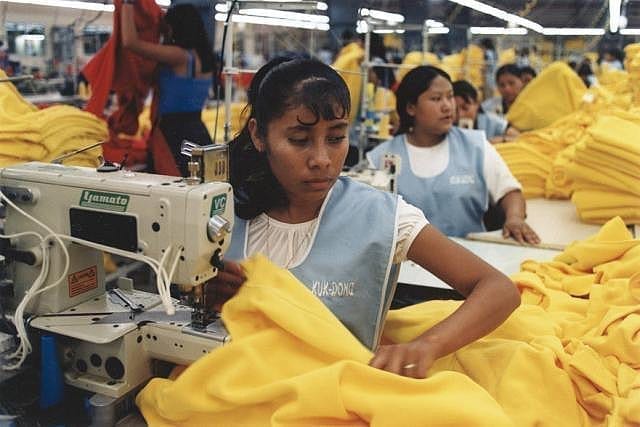Cheap clothes have a much greater ecological and social cost than one might realize. Perhaps our clothes should be more expensive to cover the balance.
As soon as human beings discovered that mechanical power provided by flowing water or combustion could be put to work manufacturing goods in factories, one of the first tasks to undergo automation was the production of cloth. In short order, automation was relieving drudgery – by putting skilled workers out on the street, to adapt or starve. This is where the Luddites came in. They weren’t opposed to new technology per se, only when it was used to impoverish workers and shift the balance of wealth upward. Automation and low wage sweatshops are still used to create ever-cheaper garments in our throwaway culture. However, then as now, ecological sustainability and decent working conditions are good reasons why our clothes should be more expensive.
Choices that are good for the individual are often detrimental to the group, and cumulatively, can be even worse for the environment. For example, undercutting the competition by making cheaper clothes can spell business success, and buying cheaper clothes can allow people to shift their budget to cover other necessary expenditures, such as food or housing. Sooner or later, though, everyone else catches on, and to compete, other manufacturers are forced into a race to the bottom. Meanwhile, the sheer ubiquity of cheap clothes drives consumer expectations. People come to depend on clothes being available at incredibly low prices, historically speaking. Garments are worn for a season and then discarded, rather than being expected to last. Social expectations change to accommodate the influx. One cannot be seen in old clothes outside of the garage or garden. Eventually, the world is awash in used textiles, causing even more problems with disposal.
One reason why our clothing should be more expensive is to offset the externalities that the industry doesn’t (usually) pay for (or often even consider), and which are not covered in the purchase price. We end up paying for it all somehow, whether it’s plastic microfibers in the food chain or toxic dye chemicals in our rivers causing health problems somewhere else, but including the cost of cleanup into the price on the tag would shift the burden to those who use the products, instead of those who live, well, downstream. If higher prices for clothing mean that we blow through less of it, that’s even fewer externalities we’ll have to worry about. We already buy 400% more clothing than we did 20 years ago, we can do with less again.
Even a natural and relatively sustainable like wool has a messy supply chain, with each step having its own impact. The Story of Wool, by the Savory Institute.
Another reason why our clothing should be more expensive is to account for the full value of the labor that creates it. There are underpaid human workers, sure, since generally only a tiny fraction of the purchase price goes towards their wages. (Our expectations have been skewed by mass production. This is why the cost of specialized clothing, such as historical garb made by skilled artisans, can seem surprisingly high.) Combine that with the unpaid labor of machines fueled by similarly underpriced fossil fuels like coal, and we’re getting a complete steal without even realizing it anymore. If we had to pay for craftspeople to harvest, process, spin, weave, and hand sew our clothes, the price would be through the roof. Maybe our clothes should be more expensive.
That’s just the production side, too. What happens to our old and busted clothes that are sooooo last year? That’s the subject of tomorrow’s post.


Join the conversation!